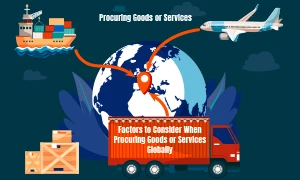Global sourcing has undergone a massive shift in the last few years. The post-pandemic world, ongoing geopolitical shifts, nearshoring trends, and ESG considerations are redrawing the global supply chain. Companies are diversifying suppliers, seeking faster delivery routes, and focusing on resilient, ethical, and flexible sourcing strategies.
As businesses adapt to this shifting environment, one thing is clear: where you source matters more than ever. Your choice of sourcing location can directly influence your cost efficiency, speed to market, and overall competitiveness. In a rapidly changing market, speed, agility, sustainability, and supplier diversity have become essential pillars of long-term success.
Let’s explore the top countries leading global sourcing in 2025 and the strategic advantages each one offers.
Global Sourcing Powerhouses: Top Countries Leading the Way in 2025
As supply chains evolve, following countries are emerging as the most strategic, reliable, and competitive sourcing destinations for forward-thinking businesses.
China
Despite growing competition and rising labor costs, China remains at the top of the global sourcing hierarchy. Its unparalleled scale in manufacturing, sophisticated infrastructure, and deep supplier networks make it indispensable for companies that need mass production and complex assemblies. In 2025, China will continue to dominate in sectors like electronics, industrial machinery, consumer goods, and packaging.
While many companies are diversifying to reduce dependence on a single country, China is still seen as irreplaceable for high-volume and technically advanced products. However, sourcing strategies are shifting inland from the expensive coastal regions to tap into lower-cost labor and tax incentives. China is also pushing ahead in automation, sustainability, and smart manufacturing, which keeps it competitive beyond just cost.
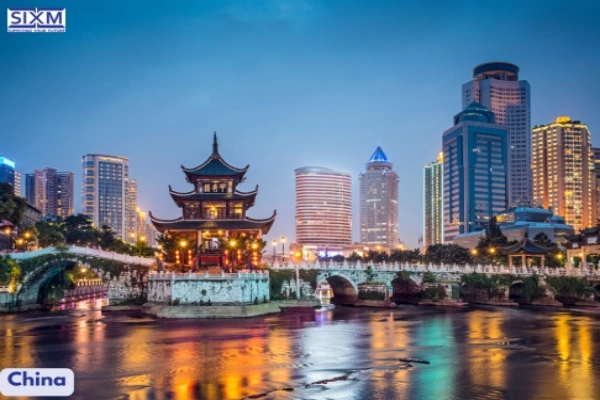
Mexico
Mexico has emerged as a key alternative to Asia, especially for U.S. companies seeking faster and more flexible supply chains. Thanks to its participation in the United States-Mexico-Canada Agreement (USMCA), Mexico enjoys tariff-free access to the U.S. market and has significantly reduced shipping times and logistics costs.
In 2025, Mexico continues to grow its presence in sectors like automotive parts, electronics, furniture, and medical devices. Industrial hubs like Monterrey, Guadalajara, and Tijuana are attracting heavy investment due to their skilled labor, improving infrastructure, and proximity to U.S. consumers. For businesses prioritizing speed-to-market and reduced supply chain risk, Mexico remains an optimal nearshoring destination.

India
India has become one of the most important sourcing destinations for companies aiming to diversify away from China. With its massive labor pool, competitive wages, and government support through initiatives like “Make in India,” the country is seeing a surge in manufacturing across multiple sectors.
In 2025, India continues to grow its capabilities in textiles, pharmaceuticals, leather, and consumer electronics. The country also benefits from a strong IT and software foundation, which complements its ambitions in smart manufacturing and industrial automation. Although some infrastructure challenges remain, many global brands are turning to India for its scalability, innovation potential, and growing digital infrastructure.

Vietnam
Vietnam’s rise as a manufacturing hub has been nothing short of remarkable. Benefiting from the “China+1” strategy adopted by multinational corporations, Vietnam offers lower labor costs, stable governance, and favorable trade agreements with the EU, Japan, and ASEAN countries.
By 2025, Vietnam is firmly positioned as a leading exporter of garments, footwear, electronics, and furniture. Provinces like Bac Ninh and Ho Chi Minh City are major hubs for global electronics brands, including Samsung and Apple suppliers. The Vietnamese government is actively investing in infrastructure and sustainability to enhance its global appeal, making it a go-to for companies seeking cost-effective and reliable alternatives to China.
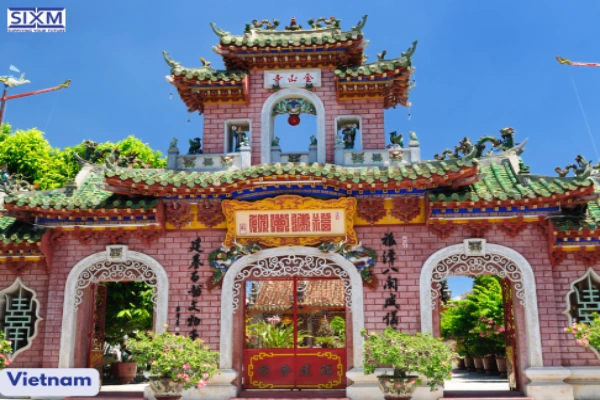
Bangladesh
Bangladesh has maintained its status as one of the world’s top garment exporters. In 2025, it continues to be the preferred sourcing destination for high-volume, low-cost apparel manufacturing. With its large, skilled workforce and experience in Ready-Made Garments (RMG), Bangladesh is especially attractive for global fashion and textile brands.
What sets Bangladesh apart is its ongoing transformation toward sustainable manufacturing. Many factories are now LEED-certified, and there's a growing emphasis on ethical labor practices and compliance. The country is also expanding into leather goods, home textiles, and light engineering, offering more options for buyers beyond just apparel.
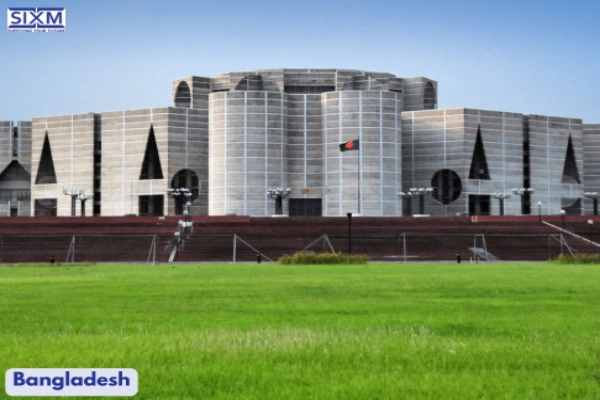
Turkey
Turkey offers a unique sourcing advantage due to its geographical location, bridging Europe and Asia, and its ability to produce high quality goods quickly. In 2025, it continues to serve as a key partner for European buyers who need fast turnaround times and lower transportation costs.
With strong capabilities in textiles, fashion, ceramics, and automotive components, Turkey is an ideal source for companies that value speed and flexibility over pure cost savings. The country also benefits from several Free Trade Agreements and a mature logistics network, which makes it a strategic gateway into European and Middle Eastern markets.
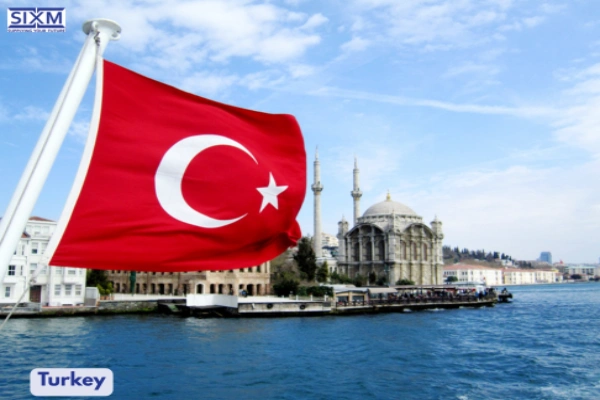
Indonesia
Indonesia is transitioning from a raw materials exporter to a more value-added manufacturing economy. In 2025, it's gaining attention as a cost-effective sourcing destination, particularly in footwear, consumer goods, rubber products, and processed food industries.
The government is actively promoting foreign investment in industrial zones and offering tax incentives to manufacturers. With a population of over 270 million, Indonesia offers not just workforce scalability but also a large domestic market for companies looking to establish long-term regional presence.

Other Rising Players to Watch
Several emerging markets are gaining momentum in global sourcing. Let’s explore some of the most promising rising sourcing destinations that businesses should keep an eye on this year.
The Philippines
Known globally for its robust BPO industry, the Philippines is now gaining recognition for its growing role in electronics manufacturing and semiconductor assembly. With a young, English-speaking workforce and improving infrastructure, the country is well-positioned to support tech-enabled manufacturing. Many companies are turning to the Philippines for products like electronic components, circuit boards, and packaging materials. Additionally, its proximity to major Asian markets and strong digital capabilities make it an attractive location for hybrid manufacturing and fulfillment services.
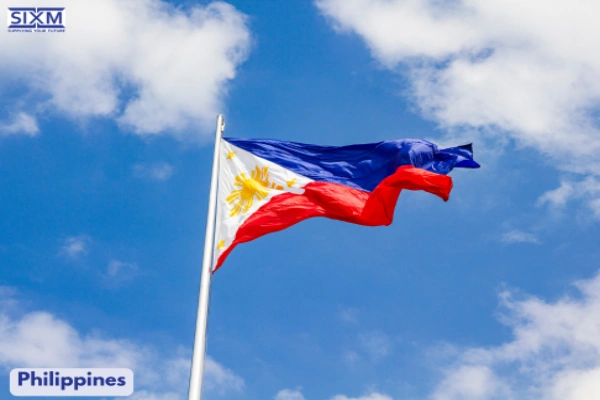
Thailand
Thailand continues to be a major force in automotive production and processed food exports. It serves as a key manufacturing hub for car parts, electrical appliances, and agricultural goods. With well-developed infrastructure, access to deep-sea ports, and participation in several major trade agreements, Thailand offers fast and reliable shipping to global markets. In 2025, its stable political climate and skilled workforce make it a preferred choice for companies sourcing both industrial and consumer products in Southeast Asia.

Pakistan
Pakistan remains one of the most competitive countries for textile sourcing, especially for cotton-based products such as towels, bedsheets, and denim. Its large and experienced textile workforce continues to attract buyers from Europe, the Middle East, and beyond. In recent years, Pakistan has also made strides in niche manufacturing, particularly in leather goods, sportswear, and surgical instruments. With low production costs and duty-free access to the EU under the GSP+ program, Pakistan is increasingly being considered as a complementary sourcing destination alongside larger Asian markets.
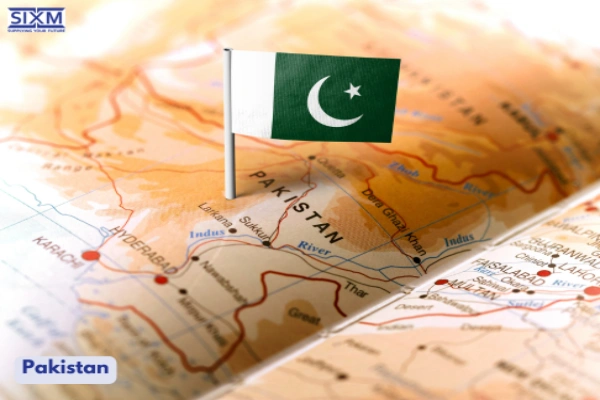
Poland
As a member of the European Union, Poland has become a go-to manufacturing location for businesses that want to source within the EU’s regulatory and trade frameworks. Its central location, skilled technical labor, and modern factories support the production of industrial machinery, electronics, plastic components, and smart home technologies. Poland is especially valuable for European brands that want to shorten delivery times, avoid customs delays, and ensure compliance with strict environmental and labor standards. In 2025, its sourcing potential continues to grow across both industrial and consumer sectors.
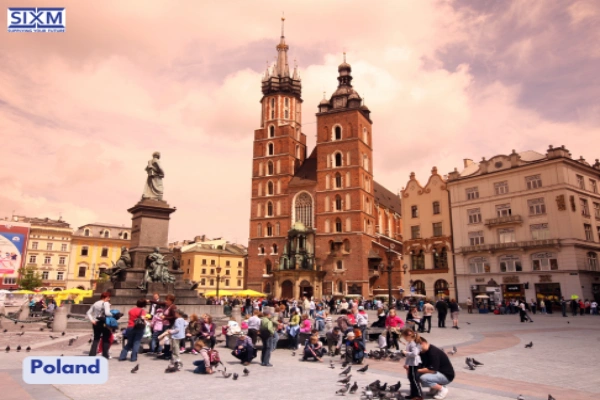
Egypt
Egypt is fast becoming a strategic sourcing base for companies that want access to both African and Middle Eastern markets. The country’s growing textile and cotton industries are supported by a large, cost-effective labor pool and favorable trade agreements with the EU and Arab League countries. Egypt’s free trade zones and improving infrastructure make it suitable for producing apparel, household goods, and light industrial products. Its geographic location along the Suez Canal also provides a shipping advantage for companies serving European and Asian customers simultaneously.

Colombia
Colombia is gaining attention as Latin America's emerging manufacturing hub, particularly for buyers targeting the U.S. and regional markets. Thanks to the U.S.–Colombia Trade Promotion Agreement, exporters enjoy tariff-free access to the United States, making it an appealing nearshoring option. Colombia has strong capabilities in textiles, leather production, coffee, and processed foods. As infrastructure and security conditions continue to improve, many businesses are exploring Colombia for its balance of cost efficiency, quality, and proximity to North America.
These rising sourcing countries offer significant opportunities for companies looking to diversify supply chains, tap into regional expertise, or reduce costs without sacrificing quality. While they may not replace larger hubs in every category, they can play a crucial role in building a resilient and flexible sourcing strategy for the future.
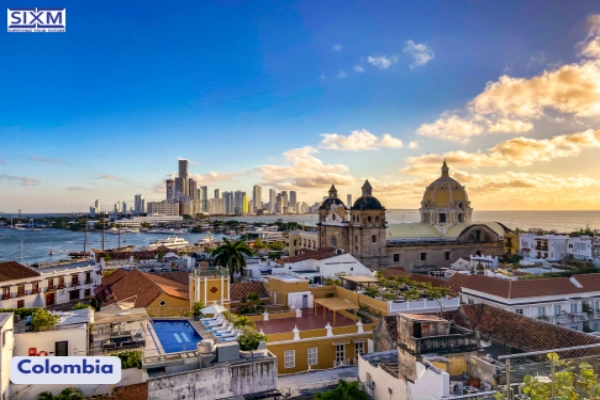
Global Sourcing Trends in 2025
The global sourcing landscape is being reshaped by key trends. Nearshoring is becoming increasingly popular as companies seek to shorten supply chains and reduce geopolitical risk. Multi country sourcing models such as “China plus one plus one” are now standard for supply chain resilience. Environmental and social governance (ESG) factors play a larger role in vendor selection, as customers and regulators demand more transparency.
Technology is also transforming sourcing. From AI-powered supplier discovery to real-time logistics tracking, digital tools are making global procurement more efficient and data-driven. Trade agreements and regional partnerships are influencing sourcing strategies more than ever, often outweighing labor costs in decision-making.
To better understand which approach fits your business needs, explore our detailed comparison of Local Sourcing vs Global Sourcing and how each impacts cost, flexibility, and supply chain resilience.
How to Choose the Right Sourcing Country
Choosing the best sourcing destination requires a strategic approach. Here are the key factors every business should consider when selecting a sourcing destination:
1. Product Type and Manufacturing Capabilities
Start by assessing which countries specialize in your product category. For example, Bangladesh and India are global leaders in textile and garment manufacturing, while China and Vietnam excel in electronics and consumer goods. Mexico is strong in automotive parts and appliances, while Poland is ideal for industrial components within the EU. Matching your product type to the country’s manufacturing strengths will reduce defects, improve efficiency, and ensure a smoother production process.
2. Cost vs. Value
Labor costs are still important, but they must be weighed against value-added factors like quality, yield rates, compliance, and after-sales service. For example, while China may no longer be the cheapest, its expertise in complex assemblies and scalable production offers high value. In contrast, a lower-cost country may require more oversight and incur hidden costs in quality control, logistics, or delays.
Focus on total landed cost—which includes manufacturing, logistics, tariffs, and risk—not just factory pricing.
3. Lead Times and Logistics
Proximity to your primary market can significantly impact delivery timelines and inventory planning. Nearshoring to countries like Mexico or Turkey offers faster turnaround and reduced freight costs for North American or European businesses, respectively.
Evaluate port access, road and rail infrastructure, customs efficiency, and shipping frequency. Long lead times from distant regions may require higher inventory levels and tighter supply chain coordination.
4. Trade Agreements and Tariff Benefits
Trade agreements can make or break your margins. Countries that have favorable trade terms with your target market (such as USMCA, CPTPP, GSP+, or EU FTAs) can offer significant cost advantages.
For example:
- Mexico benefits from duty-free access to the U.S. under USMCA.
- Vietnam enjoys tariff reductions through the EU-Vietnam FTA.
- Pakistan has duty-free access to the EU through GSP+.
Check for applicable Free Trade Agreements (FTAs) and assess how they impact your specific product categories.
5. Political and Economic Stability
Unrest, currency volatility, or sudden policy changes can disrupt production. Countries with strong legal frameworks, stable governments, and predictable regulations are safer choices for long-term sourcing relationships.
Stay informed about each country’s political climate, foreign investment policies, and history of supply chain disruptions. It’s also wise to avoid overdependence on any single region with rising geopolitical risks.
6. ESG Compliance and Ethical Standards
With growing scrutiny from consumers and regulators, sourcing from environmentally and socially responsible countries is now a business imperative. Many buyers demand transparency, fair labor practices, and sustainable production processes.
Before choosing a sourcing country, evaluate:
- Factory certifications (e.g., ISO, BSCI, WRAP, LEED)
- Environmental impact policies
- Worker rights and safety standards
Ethical sourcing builds brand trust and helps ensure long-term compliance with global ESG requirements.
7. Supplier Network and Scalability
Can the country support your production volumes now — and in the future? A mature supplier ecosystem makes it easier to switch suppliers, scale up, or diversify within the same country.
China, for example, offers vast supplier clusters that support electronics, textiles, and consumer products end-to-end. Vietnam and India are developing similar ecosystems in key sectors.
Research how well-developed the local supply chain is for your industry, and whether there’s access to raw materials, tooling, and skilled labor.
8. Language, Culture, and Business Practices
Smooth communication is critical to avoiding costly misunderstandings. Countries with English-speaking workforces or well-established export industries tend to offer a better sourcing experience. Also, consider cultural alignment, negotiation styles, and the ease of building long-term relationships. Working with a sourcing agent or local consultant can help bridge language or cultural gaps.
9. Risk Diversification
Relying on a single sourcing country, even one as established as China, can leave your business vulnerable to disruptions such as trade tensions, pandemics, or natural disasters. A more resilient approach is to adopt a multi-country sourcing strategy, often referred to as the “China plus one” or “China plus two” model. This not only spreads risk but also enhances flexibility, reduces lead times, and improves supply chain stability.
This approach balances cost, lead time, and risk, giving your business the flexibility to adapt when disruption strikes.
Want to streamline your supply chain and reduce sourcing risks? Explore our guide on Sourcing Companies: What They Do and Why They Matter to see how the right partner can add value from supplier selection to delivery.
Global Sourcing Is Now a Strategy, Not Just a Cost-Cutting Tool
In 2025, sourcing is no longer a back-office function. It’s a core business strategy that directly impacts profitability, risk exposure, and customer satisfaction. As global dynamics continue to evolve, businesses must adopt a proactive, diversified, and value-driven approach to sourcing.
From nearshoring to Mexico and expanding into Vietnam to building resilience through multi-country supplier networks, staying flexible and informed is essential. At SIXM, we help businesses navigate this complexity through our comprehensive Strategic Sourcing Services, offering data-driven insights, supplier vetting, and end-to-end sourcing support.
Whether you’re aiming to optimize costs, diversify your supplier base, or expand into new markets, our team is here to support you at every step. Ready to build a smarter sourcing strategy for 2025 and beyond? Let SIXM help you find the right country — and the right partner.

